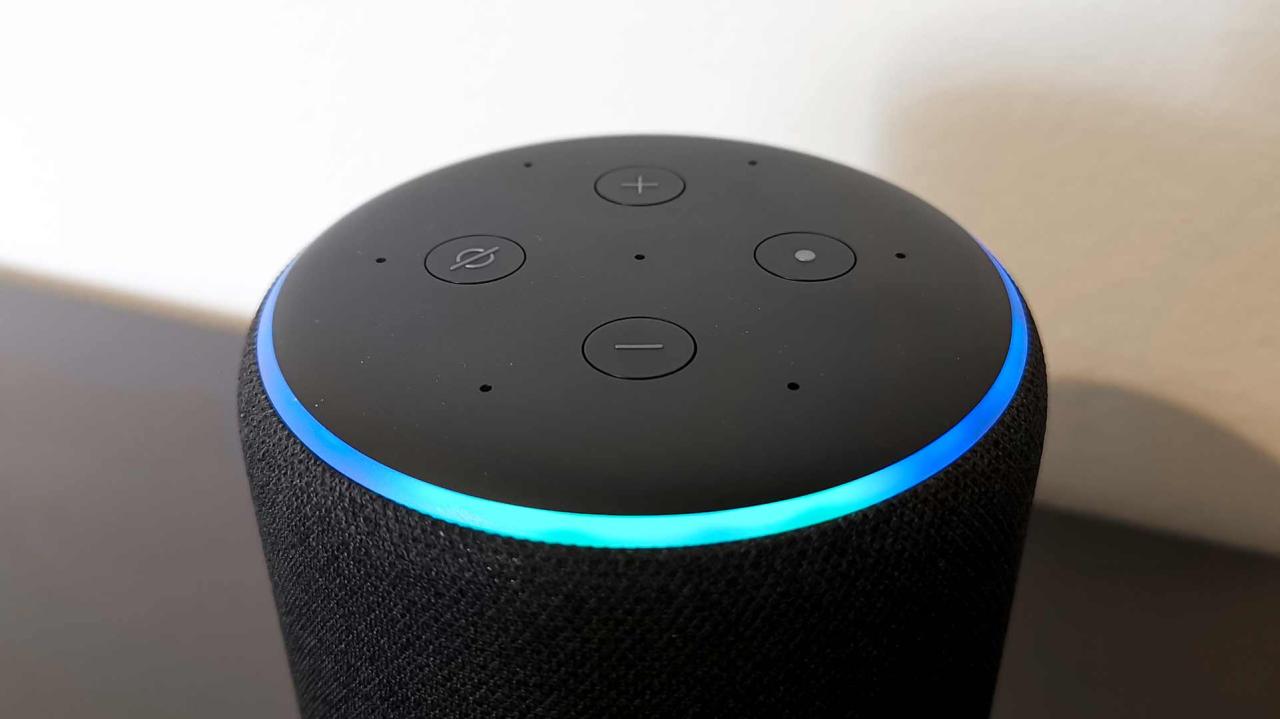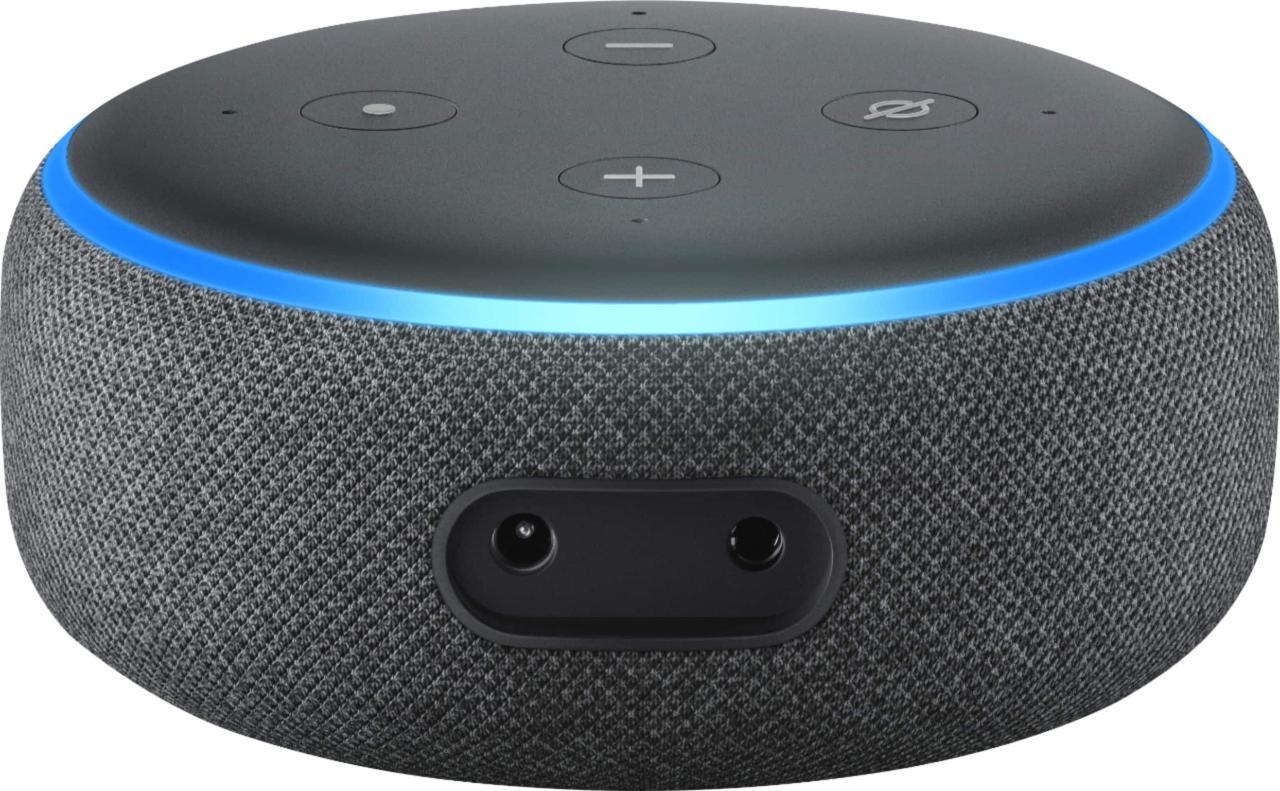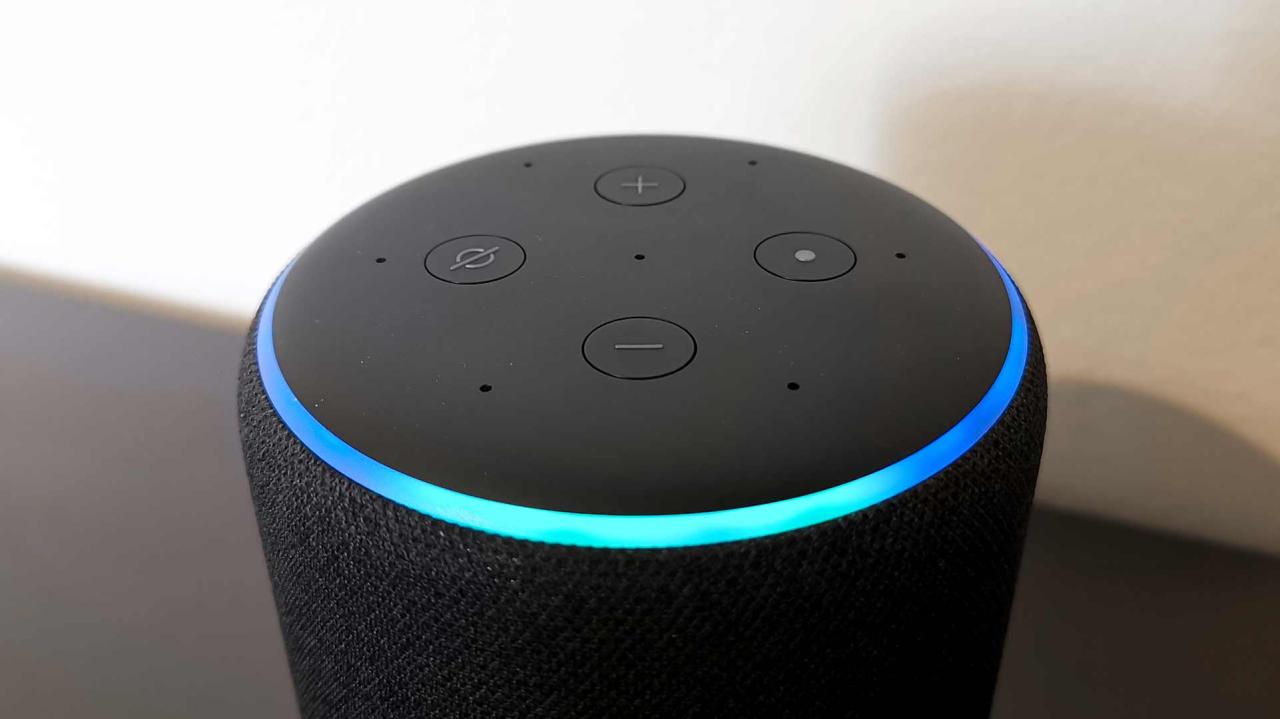Delving into google home alexa, this introduction immerses readers in a unique and compelling narrative, highlighting the ever-evolving landscape of smart home technology. With the rise of voice-activated devices, Google Home and Alexa have emerged as frontrunners, each bringing distinct features and functionalities to the table.
As we explore their key differences and capabilities, you’ll discover how each device integrates into your life, from voice recognition to smart home compatibility, and what sets them apart in enhancing your daily routines.
Comparison of Google Home and Alexa
The competition between Google Home and Alexa has become a focal point in the world of smart home technology. Both devices offer unique functionalities and integrations, catering to different user preferences and requirements. Understanding the key differences can assist potential buyers in making informed decisions about which smart speaker best suits their needs.
The primary distinction between Google Home and Alexa lies in their core functionalities and interfaces. Google Home leverages Google Assistant, providing robust capabilities for search and information retrieval. This makes it particularly adept at answering questions, providing real-time information like weather updates, and integrating seamlessly with Google services. Conversely, Alexa, powered by Amazon, excels in controlling smart home devices and offers a wider range of third-party integrations through its extensive skills library. This aspect enhances its adaptability and customization options for users.
Functionality and User Experience
When considering the functionalities of Google Home and Alexa, numerous factors come into play that affect user experience. Below are some key aspects to evaluate for each device:
- Voice Recognition: Google Home typically demonstrates more advanced natural language processing, allowing users to engage in more conversational interactions. Alexa, while effective, sometimes requires more specific command phrasing.
- Search Capabilities: Google Home’s integration with Google Search yields accurate and detailed responses to queries, especially for complex questions, while Alexa’s responses may lack depth due to its reliance on select sources.
- Music Services: Both devices support various music streaming services, but Google Home tends to integrate better with YouTube Music and Google Play Music, while Alexa offers superior compatibility with Amazon Music.
- Smart Home Control: Alexa boasts a larger number of compatible smart devices, making it a preferred choice for users heavily invested in smart home ecosystems. Google Home, however, is rapidly expanding its compatibility and is particularly effective with Nest products.
Compatibility with Smart Home Products
The compatibility with smart home products is a crucial consideration for consumers looking to create a cohesive smart home experience. The following points highlight the strengths of each platform:
- Amazon Alexa: With thousands of compatible devices, Alexa provides extensive support for a wide range of smart home brands such as Philips Hue, Ring, and Ecobee. This extensive ecosystem allows for versatile home automation setups.
- Google Home: Google Home’s compatibility is steadily increasing, particularly with Nest devices, but it currently has fewer options compared to Alexa. However, its integration with Google services offers unique advantages for users already utilizing Google products.
In terms of user experiences, feedback often emphasizes the strengths and weaknesses of both systems. Google Home users appreciate its intuitive voice recognition and access to information, while Alexa users frequently cite its smart home capabilities and the vast selection of skills as significant benefits. However, both devices have been noted for occasional misunderstandings in voice commands, highlighting the evolving nature of voice technology.
“The choice between Google Home and Alexa ultimately boils down to user preferences, especially regarding integration with existing services and devices.”
Voice Recognition Capabilities

Voice recognition technology has evolved significantly, becoming a cornerstone of smart home devices such as Google Home and Alexa. While both platforms utilize advanced machine learning algorithms to understand and process human speech, their methods and effectiveness can vary. This section explores the nuances of voice recognition between these two popular devices, from their handling of different accents to their accuracy levels.
Differences in Voice Recognition Technology, Google home alexa
Both Google Home and Alexa leverage sophisticated natural language processing techniques to interpret voice commands. However, Google Home is particularly noted for its integration with Google’s vast data ecosystem. This allows it to pull contextually relevant information more effectively and respond to complex queries.
In contrast, Alexa is designed to excel in command-based interactions, often performing better with straightforward instructions. While both systems utilize cloud computing for processing voice data, Google’s approach tends to deliver a more conversational experience, thanks to its deep learning capabilities.
Handling Accents and Languages
The ability to understand diverse accents and languages is crucial for user satisfaction. Google Home supports multiple languages and is designed to recognize various accents with relative ease. For instance, users in regions like the UK, India, or Australia have reported that Google Home accurately picks up on local dialects and phrases, enhancing its usability.
Alexa also supports multiple languages, but its regional accent recognition can sometimes lag behind Google’s capabilities. There have been instances where users with strong regional accents found that Alexa struggled to comprehend commands, necessitating repetition or rephrasing for accurate recognition.
Accuracy and User Experiences
Voice recognition accuracy is a significant factor for both devices, and while both perform admirably, user experiences can vary. Google Home frequently receives praise for its high accuracy in understanding complex sentences and contextual requests. Users often find that it can interpret their intents better, especially in multi-part queries.
Conversely, Alexa has faced criticism regarding misinterpretations, particularly in noisy environments or when users speak quickly. Users have noted that Alexa sometimes fails to recognize commands that are phrased in a less conventional manner, leading to frustration.
“While both devices are generally reliable, Google Home tends to outperform Alexa in understanding nuanced speech and context.”
Overall, both Google Home and Alexa have their strengths and weaknesses, particularly in the realm of voice recognition. User preferences may heavily depend on the specific use cases and the linguistic diversity present within their households.
Smart Home Integration

The integration of smart home devices with voice assistants has revolutionized the way we interact with technology in our daily lives. Two of the leading platforms in this arena are Google Home and Amazon Alexa, each offering a unique ecosystem of compatible devices. Understanding the differences and capabilities of these platforms can guide consumers in making informed decisions about their smart home setups.
Both Google Home and Alexa support a wide range of smart home devices, encompassing security systems, lighting, thermostats, and more. However, the extent and variety of compatible devices vary between the two ecosystems.
Types of Smart Home Devices
Each platform supports different types of smart home devices that enhance user experience and convenience. Here is a comparison of the types of devices that work seamlessly with Google Home and Alexa:
- Security Systems: Both platforms support popular brands like Ring and Nest for home security monitoring.
- Lighting: Philips Hue and LIFX are compatible with both systems, while Google Home also supports certain Xiaomi products.
- Thermostats: Smart thermostats like Nest and Ecobee work well with both, ensuring efficient home climate control.
- Smart Plugs: TP-Link and Wemo plugs can be integrated into both ecosystems, allowing for easy control of home appliances.
- Surveillance Cameras: Arlo and Nest cameras are compatible with both platforms, providing reliable home monitoring options.
Device Ecosystem Comparison
The ecosystems of Google Home and Alexa differ in terms of the variety and number of compatible devices. Here is a comparison of device variety for each platform:
| Platform | Device Variety |
|---|---|
| Google Home | Supports over 50,000 smart home devices across various categories, including lighting, security, entertainment, and appliances. |
| Amazon Alexa | Compatible with more than 100,000 smart devices, offering extensive options in lighting, security, audio, and home automation. |
Step-by-Step Guide to Setting Up Smart Home Devices
Setting up smart home devices with Google Home and Alexa involves several straightforward steps. Here’s a guide for each platform:
Google Home Setup
- Download and open the Google Home app on your smartphone.
- Ensure your smart device is powered on and connected to the same Wi-Fi network as your phone.
- Tap on the ‘+’ icon to add a new device.
- Select ‘Set up device’ and choose ‘New devices’.
- Follow the on-screen instructions to link your smart device with Google Home.
- Assign the device to a room for better organization.
- Test the device by issuing a command via Google Assistant.
Amazon Alexa Setup
- Download and open the Amazon Alexa app on your smartphone.
- Make sure your smart device is plugged in and connected to Wi-Fi.
- Tap on the ‘Devices’ icon at the bottom of the app.
- Select ‘+’ to add a new device.
- Choose the type of device you want to connect and select the brand.
- Follow the app prompts to enable the necessary skills and link your device.
- Test the integration by using a voice command with Alexa.
“Smart home integration enhances convenience and efficiency, allowing users to control multiple devices with simple voice commands.”
User Interface and Experience

The user interface and overall experience of utilizing smart home devices like Google Home and Amazon Alexa significantly influence how users interact with these technologies. A well-designed interface can enhance usability, making it easier for individuals to manage their smart homes and access various features. Both platforms offer distinct user interfaces that cater to different user preferences and needs, providing a range of functionalities to optimize daily tasks.
User Interface Features of Google Home and Alexa Applications
The Google Home and Alexa applications come with unique design elements and functionalities that cater to their respective ecosystems. The Google Home app is characterized by its clean, minimalist interface that emphasizes Google’s Material Design principles. It organizes devices and activities into easy-to-navigate categories, allowing users to view their smart home devices, routines, and suggestions in a visually appealing manner.
On the other hand, the Alexa app presents a more functionality-driven layout that includes tabs for devices, routines, and the Alexa Skills store, ensuring users can easily access various features. The interface is slightly more complex due to the extensive range of skills and integrations available with Alexa.
Both applications support voice commands for hands-free operation, making it easier for users to control their devices without needing to rely solely on the touchscreen interface.
Personalization Support for User Preferences
Personalization plays a crucial role in enhancing the user experience on both platforms. Google Home utilizes Google’s robust data capabilities to offer personalized recommendations based on user habits, previous interactions, and preferences. Users can customize their Google Assistant through voice recognition, allowing the device to recognize different voices and tailor responses to individual users.
Similarly, Alexa supports personalization through its “Voice Profiles” feature, which allows the device to recognize distinct voices and provide tailored responses and suggestions. Users can customize their Alexa experience further by adding skills that align with their personal interests, such as games, news updates, or smart home functions.
Both platforms encourage users to set routines that can automate tasks, further enhancing personalization. For instance, users can create a morning routine that sets the thermostat, provides weather updates, and starts their favorite playlist with a single command.
Maximizing Usage Experience for Daily Tasks
To make the most of Google Home and Alexa, leveraging essential features can significantly enhance daily productivity. Here are some tips for optimizing the use of each device:
– Routine Creation: Set up custom routines that execute multiple commands with a single phrase.
– Voice Commands: Familiarize yourself with commonly used voice commands to streamline interactions.
– Smart Home Device Integration: Ensure that all smart devices are connected and functioning within the same ecosystem for seamless control.
– Personalization Options: Regularly update preferences and skills in the app to align with your changing needs.
– Voice Profiles: Set up and refine voice profiles to ensure accurate voice recognition and personalized responses.
By implementing these strategies, users can create a more efficient and enjoyable experience with their Google Home and Alexa devices, ultimately simplifying daily tasks and enhancing smart home management.
Q&A: Google Home Alexa
What devices are compatible with Google Home?
Google Home works with a wide range of smart devices, including lights, thermostats, security cameras, and speakers from brands like Philips Hue, Nest, and TP-Link.
How does Alexa handle multiple accents?
Alexa has been designed to recognize various accents and dialects, continually learning from user interactions to improve its accuracy over time.
Can I use Google Home and Alexa together?
While they are separate ecosystems, you can use them in tandem by integrating compatible devices that work with both platforms.
Which voice assistant is better for music streaming?
Both Google Home and Alexa offer excellent music streaming capabilities, but the choice often depends on your preferred streaming service compatibility and personal preferences.
Is it possible to change the wake word for Alexa?
Yes, you can change Alexa’s wake word to options like “Echo,” “Amazon,” or “Computer” through the app settings.
If you’re looking to enhance your smart home experience, the sonoff zbmini is a fantastic choice. This compact device allows you to control your lighting and appliances effortlessly, integrating seamlessly with your existing smart home setup. With its user-friendly interface, you can automate your home environment with just a few taps on your smartphone.
To take your entertainment to the next level, consider using philips hue sync. This innovative tool synchronizes your Philips Hue lights with your favorite movies, music, and games, creating an immersive ambiance that transforms your viewing and listening experiences. It’s an essential addition for anyone who wants to elevate their home theater setup.

